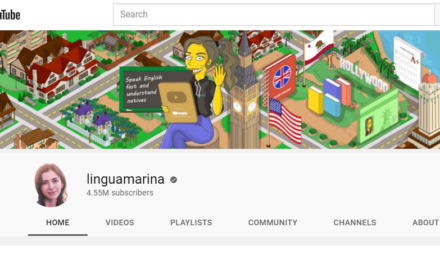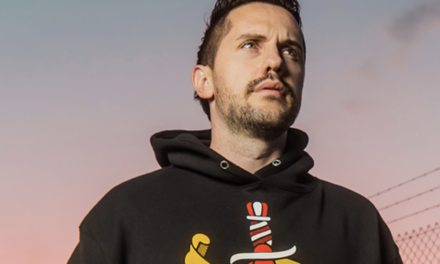Making Connections
Without a doubt, the biggest benefit of social media to journalists is vastly simplifying the ability to identify and make connections with sources. In a sense, social media has made the world smaller-even top celebrities seem more approachable.
Blake Cahill, SVP of marketing at Visible Technologies, says, “Before social media, media outlets had to have feet on the street. However, today, he says, “From a journalist’s perspective, you can really cast a wide net if you’re trying to poll people to inform your story or [if] you’re looking for experts. If you have a fairly dedicated network on Twitter, you can instantly get people raising their hands to inform your stories.”
David Siteman Garland is CEO, executive producer, and host of The Rise to the Top, an ABC show dedicated to entrepreneurship. “Using social media is how we have really landed most of the interviews with high-level people,” says Garland. He says, “We have built a pretty strong community. There are about 10,000 people at any given point that I can tap into, which is nice.” He points out, “If I have a question about a product or service or story I’m working on, it’s a huge tool for crowdsourcing. I send out a question, and it’s unbelievable the response I get back.”
Garland says that social media has allowed him to make direct connections with people he would have had a very difficult time connecting with in the past, such as Guy Kawasaki. Kawasaki is a popular business author (www.guykawasaki.com); managing director of Garage Technology Ventures, an early-stage venture capital firm; and a columnist for Entrepreneur Magazine. Previously, he was an Apple Fellow at Apple Computer, Inc. “I reached out to him on social media and said, ‘Hey, let’s get you on the show,'” says Garland. And it worked. He made the same type of connection with Tim Ferriss, author of The 4-Hour Workweek.
Finding sources is another obvious application for social media tools such as Twitter. “I do a lot of mini-columns or profiles about people or executives in the Milwaukee area, and I’ve sent out requests for nominations for those things as well as [built] up a backlog,” says Alysha Schertz, a reporter with BizTimes Milwaukee. “Twitter has also worked in last-minute situations for me where a story or a person doesn’t come through with an interview,” she says. “I can send out a tweet and, in 30 minutes, have five people willing to take their place,” Schertz says she tracks down sources both by sending a
tweet to all of her followers and by direct messaging somebody she knows who has connections or relationships in certain areas.
One caution, though: Contrary to the incredible hype that surrounds it, not everyone is actively engaged in social media. A survey conducted by the Pew Internet & American Life Project reports that 47% of adult U.S. internet users use online social networks-19% use Twitter or other status update services. Twitter and similar services are more popular among younger users, according to the survey-37% are aged 18-24 and 31% are 25-34; this compares to 19% that are 35-44 and 10% that are 45-64.
Though social media usage does cross-age groups, income levels, and professions, social-media-savvy users probably still represent a relatively distinct demographic. Thus, an over-reliance on these tools for sourcing or drawing conclusions based on using them as the sole source for research could result in skewed or inaccurate assumptions.
Another issue with sourcing stories via social media is that individual comments are often disassociated from context. Sources are not necessarily fully known or vetted. “People who were not experts and had very little ability to build their visibility have built incredible visibility and expertise with nearly zero barriers to entry other than time and commitment,” says Visible Technologies’ Cahill. This can be good, he says, referring to what he calls the “great democratization” that social media allows. On the other hand, it may lead some reporters to believe someone is an expert when, in fact, he
or she is not.
As Schertz points out, “I don’t think social media has increased the need to vet anything because you should have been doing that all along.”
Transparency
The other side of all of this interaction with the masses means that the masses also have an inside track into what you may be working on, who you’re interacting with, and what you think about all sorts of issues-pertinent and not-so-pertinent-hence, some of the concern among media organizations such as The Washington Post. Still, despite the open nature of the social media environment, journalists and reporters say they’re not so worried about being scooped or having someone else take their great story idea and run with it.
Laura Rich is a journalist entrepreneur and the co-founder of Recessionwire, a “user’s guide to the recession.” “It may seem anathema to some longtime journalists, but keeping a developing story top secret is no longer absolutely necessary,” says Rich. In fact, she says, it can hinder the journalist’s progress by keeping good ideas from them. “You can get the word out about your story through Twitter and other
networks, without giving it all away-and some unexpected leads may pop up in response.”
Garland agrees. The risk of having someone steal his idea “honestly doesn’t cross my mind,” he says. “Having all of the stuff in the open and being transparent is more stimulating and interesting anyway. I feel like I’m going to get a lot more information to make my story and my video better. If it benefits anybody else, that’s great. That’s awesome.”
Not all reporters want their entire lives to be transparent, however. That’s why MedCity News’ Seper, for instance, maintains more than one account: the MedCity account and his own non-public account, which he uses to monitor conversations. “The reason it’s closed to the public is that sometimes I say things that are meant for a handful of friends and not, necessarily, for a broader audience,” he says.
While one would hope that the same rules of professionalism will apply online as in the real world, the risk engendered by the massive reach of social media is greater than issues that may have tripped up reporters in earlier generations. “You need to monitor what you say-no drunk tweeting!” says Seper. “If you do that then you need to be ready to handle the response.”
Every new opportunity presents new challenges. “Social media has made our jobs a lot easier in some ways,” says Schertz. “In other ways it has made it harder to get the story first because everybody has instant access to information,” she says. Ultimately, she says, “I think people need to embrace it.”
Joining In
While Twitter seems to be the current social media darling, LinkedIn and Facebook also offer opportunities for making connections, says Schertz. LinkedIn, she says, is most helpful “when you know what you’re looking for or who you’re looking for because you can reach out to individuals who are professionals in the area you need a source on.” When you don’t know, she believes that Twitter is a better tool. However, LinkedIn Answers is used by some journalists to find experts within the larger LinkedIn network, and, as all responses link back to a profile, it can be a valuable resource for finding
qualified sources.
Schertz notes that Facebook can feel a little too personal, “maybe because it came out while I was in college.” Still, she says, her company has a fan page where videos can be posted and relationships can be built.
As Cahill points out, these tools also allow users to build their own closed, go-to networks of contacts. “You can create a closed, private social network where you invite people in [who] are your trusted experts that you [reach] out to all the time,” he says. For example, on LinkedIn, you can also ask questions only within your network, rather than broadcast them to anyone on LinkedIn.
“The biggest pointer or tip I can give is to just jump in,” says Schertz. “You’re not going to get any better just watching from afar. Get in there, make an account, look around, and see what other people are doing.”
For those who haven’t yet taken the plunge into leveraging social media for journalistic endeavors, Garland says, “The first thing I would do is start on Twitter, set up an account, and be very transparent about who you are and what you do.” Then, he says, listen. “Search for a term in your niche and pay attention to those who are most active-by active I mean they’re pumping out content and other people are spreading it.” These, he says, are the thought leaders and bear following.
To build upon this, he says, “I’d start getting some articles out there-a blog or whatever-and testing the waters.” He emphasizes that social media is not intended to be one way. “Ask questions and offer value,” he advises. “The more human you can be, the more people will want to interact with you.”
Johnston agrees. “I think the best advice I can give is just general social media etiquette-listen more than you speak and engage in real conversations. Social media is about building relationships,
listening, and engaging in conversations when and where appropriate.”
As demonstrated by The Washington Post’s controversial guidelines, the media is still finding its way in leveraging the new tools social media offers the craft. It is certainly not the only profession impacted-with the advent of social media the rules in every industry and profession are rapidly changing. Ultimately, like most powerful tools, social media must be used wisely to better inform the business of delivering information.






